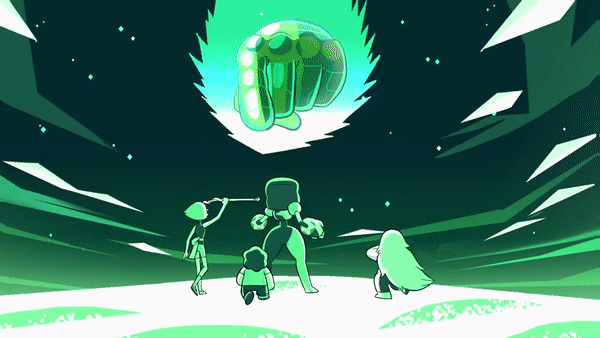Mise-en-Scene refers to the decisions filmmakers make about what to put into the frame.
From setting, lighting, costuming and staging, these choices are to guide the viewers perception of unfolding events, whether or not they are explicitly aware.
But can these tools be applied to animation?
I take as example the penultimate episode of Steven Universe Season 1, “The Return”.
To briefly catch up those who have never seen the show, Steven Universe follows Steven, a 13-year-old whose heritage is half human, and half “Gem”, a humanoid alien species whose members are characterised by their magical gems embedded into their bodies.
Steven’s mother, Rose Quartz, was a rebellious freedom fighter against the totalitarian Gem Homeworld, and died giving birth to Steven.
After receiving reports on ongoing rebel activity, Homeworld finally sends a ship to deal with the rebels. “The Return” shows us what happens when they finally arrive, ready to do who knows what to Steven and his friends.
Readings
Bordwell and Thompson discuss in “The Power of Mise-en-Scene” how various tricks have been used on screen to craft illusions of grandeur despite limited budget (Melie’s “Star Film”), and how colour can be used to draw parallels between different parts of the narrative. Though animation largely decreases the possibility of lucky storms, such as the thunderstorm which John Ford took advantage of in “She Wore a Yellow Ribbon”, the total omnipotence of colour, blocking and minute details provides omnipotence to the director.
“The Return” follows Steven as he is first alerted to the danger of the ship, advised to evacuate with the town, realises his duty and returns just in time to just barely save his friends with his shield. The episode uses costume, parallel images, lighting and props to visually complement the dramatic journey steven undergoes.
Hands

The episode starts with Steven demanding the chips that he so frequently eats. We’re very promptly shown the conflict of the episode, the incoming alien ship from Homeworld, choosing to manifest as a hand pointing towards the gems.
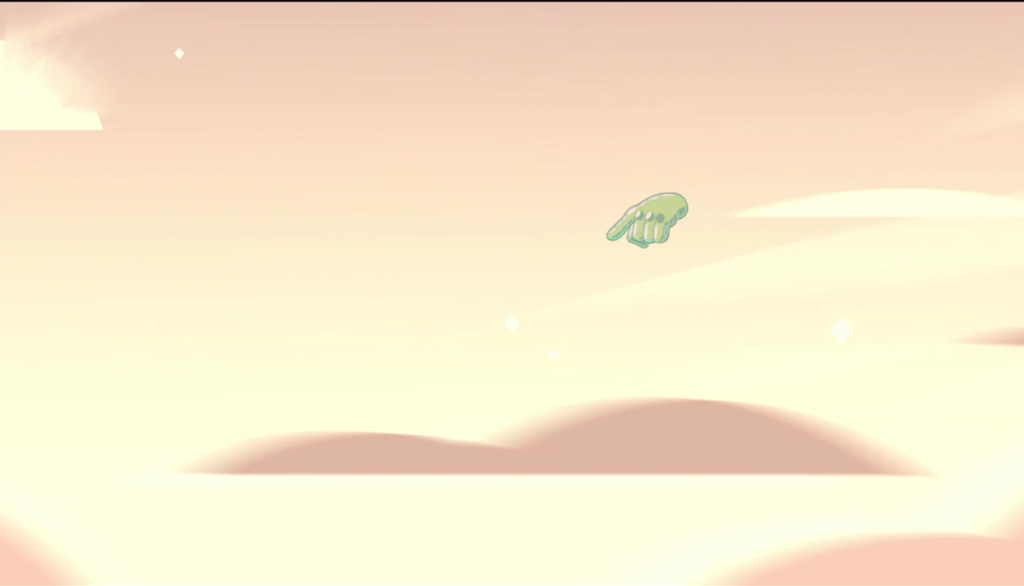
This is a one to one with the idea of the “Hand of God”. By choosing to make the alien spaceship a hand when it could have been any shape (and we do see ships of other designs later in the series after this metaphor has already been made powerfully here and needn’t be reused), it evokes that Homeworld is finally dispelling judgement on the rebel Gems of Earth for the rebellion of Steven’s Mother, and they will have to pay.
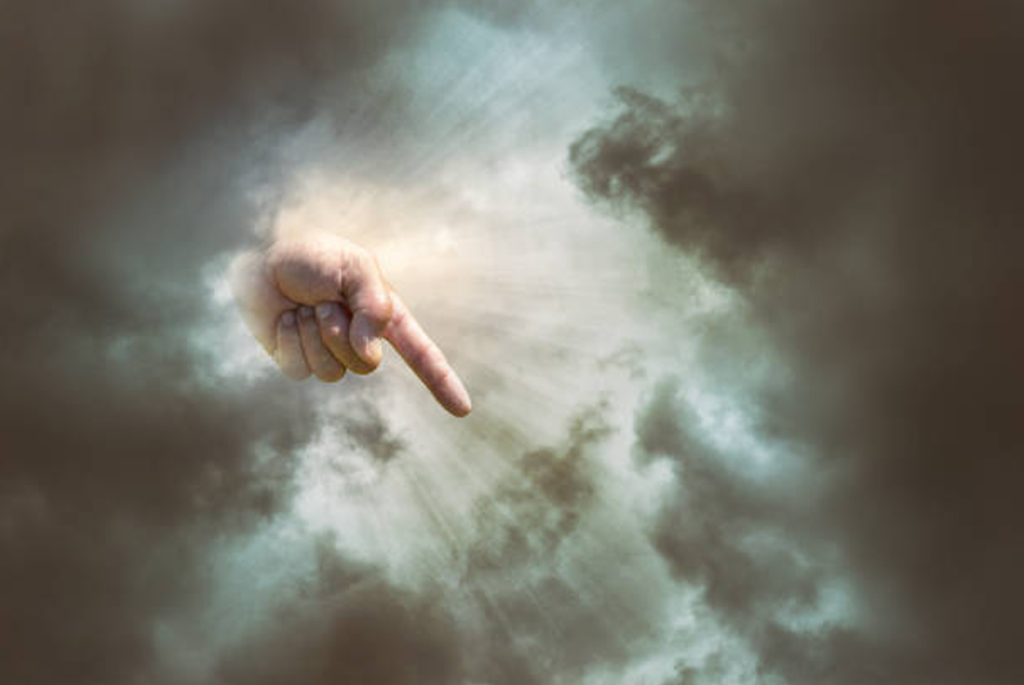
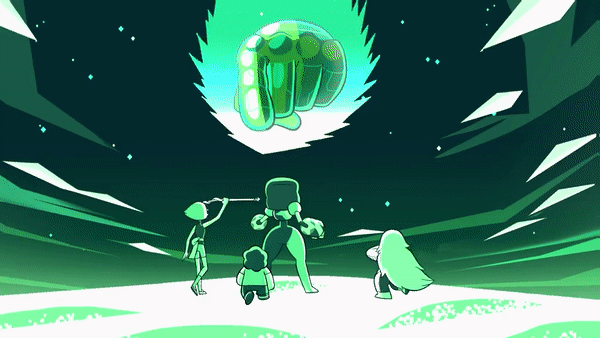
Costumes – Covering Up, For Safety
Tracking the changes of clothing in “The Return”, we see that characters cover up over the course of the episode, trying to “shield” themselves from the oncoming danger.
When we first see Steven and his father in the episode, he’s in his usual T-Shirt, proudly brandishing the star, the symbol for the crystal gems.
After learning about the hand, Steven calls the mayor, who provides the first imagery of wrapping up, of protection, of trying to avoid the danger that the ship is posing by literally wrapping himself in his curtains as the hand is poised in frame to point directly at him.
Seeing as Mayor Dewey is the leader of Beach City, we see a clear message: the hand is coming for the leader, whoever that is.
As Rose’s son, leadership is something of Steven’s inevitable birthright, whether he wants it or not. But we’ll see that “The Return” also uses props to show how Steven does in fact become this leader, and as such paints himself as the target.
By the time we cut back to Steven, we see that he has also now wrapped up, one of the few times we’ve seen him in the series thus far without his bold t-shirt and proud star.
We’re also shown, rather chillingly, his dad covering up in the exact same manner.
But the second Steven decides to return and fight, his jumper is gone. He is brave again.



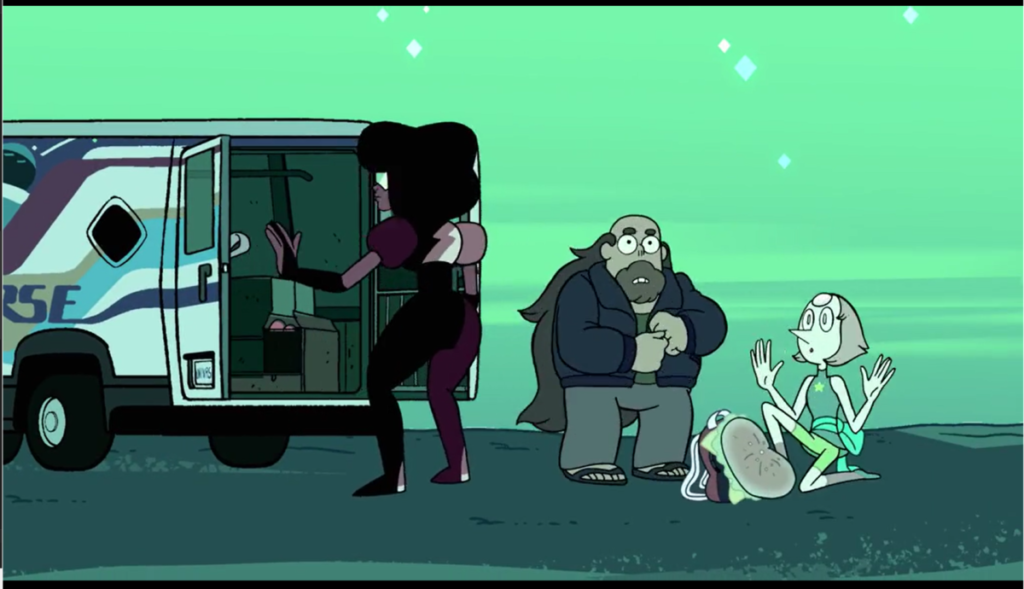

Props of Power — Tracking Leadership Through Objects
We can track the flow of power through what we’re shown Steven holding throughout the episode. First the bag of chips. In a sense foreboding. As the hand of God, Steven went demanding for what he wanted, and received it, walking away happily. This is at first an innocuous part of the episode, but when cross-referenced with Steven’s hand being a visual metaphor for the ship’s hand, we see a simple message:
The hand will get what it wants and leave with it.
This is of course what happens by the end of the episode, as all of our heroes are in the end kidnapped. Though that is beyond the scope of this post.
Either way, we then see Steven holding a phone as he contacts the mayor. He is closely associated with power, and yet not the centre of it. But power continues to be closer to Steven, as the Gems hand him a megaphone, and tell him to keep the city safe and lead them to evacuation.
He grabs the shield with pride but puts it away when it becomes obvious that he is not at the centre of what needs doing.
But by the end of the episode, Steven is holding his only true symbol of power, as he summons his Mother’s Shield. Finally, it is not something he is drawing upon from another, not something taken, not something as a proxy to power and not something given to help distract him from the main fight, but a symbol of the totality of responsibility he has taken over his Gem guardians in this moment.

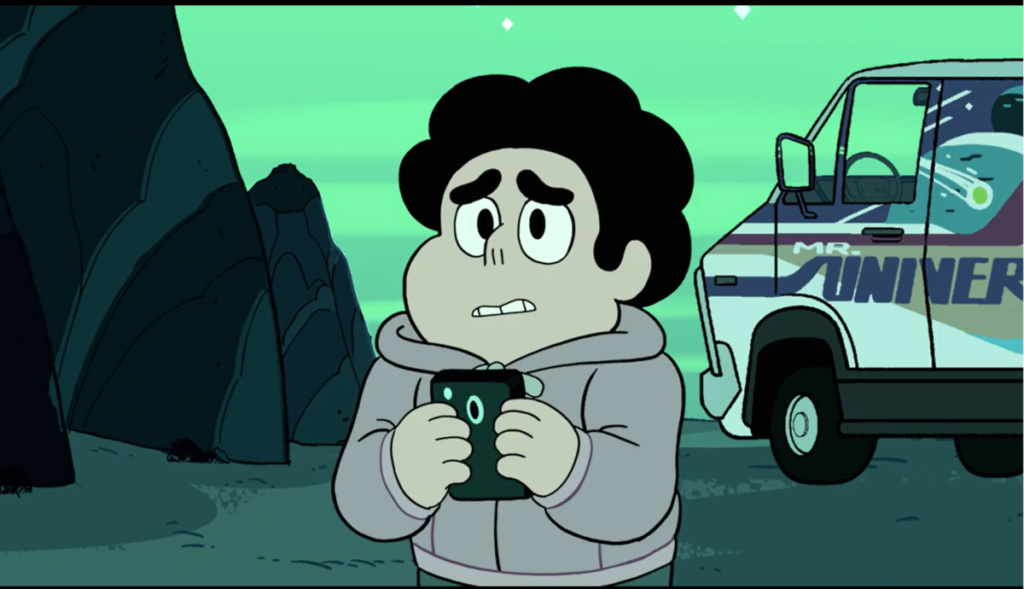
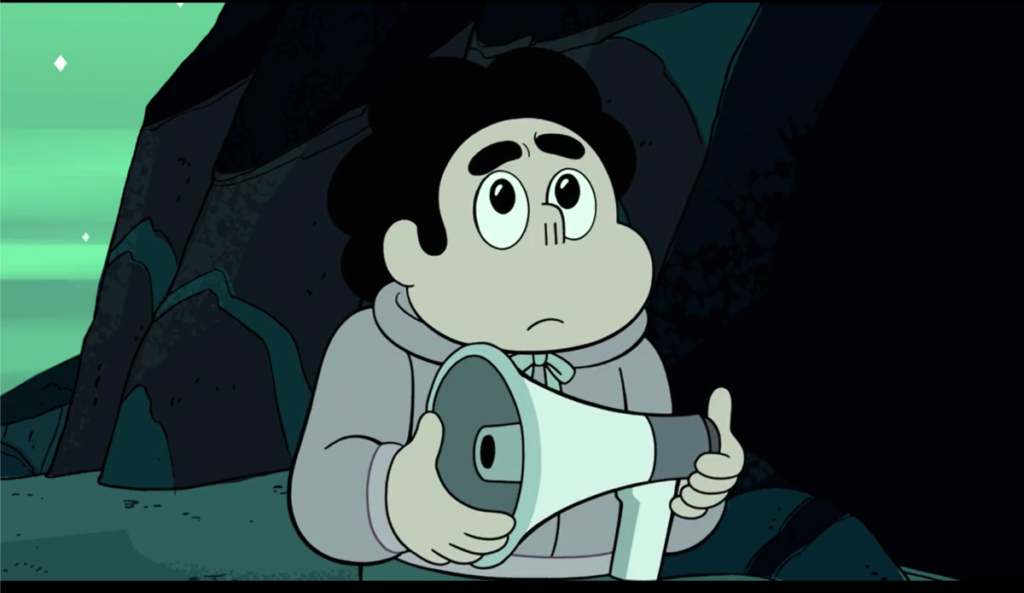



Colour
Starting with sunset, we see everything in gentle pinks and orange, which rapidly changes when the threat of the ship is made known, everything shifting into sickly greens. From then on, the colour of pink is exclusively associated with Steven, as even though the colour of his pink hoodie is incredibly muted, it still holds the colour of his mother, and of his power.
This is especially prominent when he crashes his father’s car using his bubble power, the first of two times that his bright pink power is entirely juxtaposed against the ominous green background.
This is also tracked through the symbols of power.
While Steven’s phone and megaphone, proxy symbols of power are shown as black and white (which blends into the dark greens and whites of the background), his bubble and shield are shown as an alien bright pink. This exclusivity of the colour for Steven is made exception of in neither the human townsfolk or the gems, both groups entirely dowsed in green light, no matter their clothing.






Source, Direction, and Colour
Part of the freedom of animation is the ease at which non-diegetic elements can be added. Throughout this post, I doubt you have wondered where the green light is coming from. Yes, the ship is green, but it is not luminescent.
The green light is almost beyond the world, existing only to terrify us.
And ask any Steven Universe fan. It works.
Steven Universe’s “The Return” utilises mise-en-scene in every one of its eleven minutes, its medium granting it a whole extra dimension of freedom. And we will simply run with it.
Credit: Steven Universe, Warner Brothers
